Someone asked me in email for advice about how to move many machines to a new corporate standard. I haven't dealt with desktop/laptop PC administration ("fleet management") in a while, but I explained this experience and thought I'd share it on my blog:
I favor using "the carrot" over "the stick". The carrot is making the new environment better for the users so they want to adopt it, rather than using management fiat or threats to motivate people. Each has its place.
The more people feel involved in the project the more likely they are to go along with it. If you start by involving typical users by letting them try out the new configuration in a test lab or even loaning them a machine for a week, they'll feel like they are being listened to and will be your partner instead of a roadblock.
Once I was in a situation where we had to convert many PCs to a corporate standard.
First we made one single standard PC. We let people try it out and find problems. We resolved or found workarounds to any problems or concerns raised.
At that point we had a rule: all new PCs would be built using the standard config. No regressions. The number of standard PCs should only increase. If we did that and nothing more, eventually everything would be converted as PCs only last 3 years.
That said, preventing any back-sliding (people installing PCs with the old configuration by mistake, out of habit, or wanting an "exception") was a big effort. The IT staff had to be vigilant. "No regressions!" was our battlecry. Management had to have a backbone. People on the team had to police ourselves and our users.
We knew waiting for the conversion to happen over 3 years was much too slow. However before we could accelerate the process, we had to get those basics correct.
The next step was to convert the PCs of people that were willing and eager. The configuration was better, so some people were eager to convert. Updates happened automatically. They got a lot of useful software pre-installed. We were very public about how the helpdesk was able to support people with the new configuration better and faster than the old configuration.
Did some people resist? Yes. However there were enough willing and eager people to keep us busy. We let those "late adopters" have their way. Though, we'd mentally prepare them for the eventual upgrade by saying things like (with a cheerful voice), "Oh, we're a late adopter! No worries. We'll see you in a few months." By calling them "late adopter" instead of "resistor" or "hard cases" it mentally reframed the issue as them being "eventual" not "never".
Some of our "late adopters" volunteered to convert on their own. They got a new machine and didn't have a choice. Or, they saw that other people were happy with the new configuration and didn't want to be left behind. Nobody wants to be the only kid on the block without the new toy that all the cool kids have.
(Oh, did I mention the system for installing PCs the old way is broken and we can't fix it? Yeah, kind of like how parents tell little kids the "Frozen" disc isn't working and we'll have to try again tomorrow.)
Eventually those conversions were done and we had the time and energy to work on the long tail of "late adopters". Some of these people had verified technical issues such as software that didn't work on the new system. Each of these could be many hours or days helping the user make the software work or finding replacement products. In some cases, we'd extract the user's disk into a Virtual Machine (p2v) so that it could run in the old environment.
However eventually we had to get rid of the last few hold-outs. The support cost of the old machine was $x and if there are 100 remaining machines, $x/100 isn't a lot of money. When there are 50 remaining machines the cost is $x/50. Eventually the cost is $x/1 and that makes that last machine very very expensive. The faster we can get to zero, the better.
We announced that unconverted machines would be unsupported after date X, and would stop working (the file servers wouldn't talk to them) by date Y. We had to get management support on X and Y, and a commitment to not make any exceptions. We communicated the dates broadly at first, then eventually only the specific people affected (and their manager) received the warnings. Some people figured out that they could convince (trick?) their manager into buying them a new PC as part of all this... we didn't care as long as we got rid of the old configuration. (If I was doing this today, I'd use 802.11x to kick old machines off the network after date Z.)
One excuse we could not tolerate was "I'll just support it myself". The old configuration didn't automatically receive security patches and "self-supported machines" were security problems waiting to happen. The virtual machines were enough of a risk.
Speaking of which... the company had a loose policy about people taking home equipment that was discarded. A lot of kids got new (old) PCs. We were sure to wipe the disks and be clear that the helpdesk would not assist them with the machine once disposed. (In hindsight, we should have put a sticker on the machine saying that.)
Conversion projects like this pop up all the time. Sometimes it is due to a smaller company being bought by a larger company, a division that didn't use centralized IT services adopting them, or moving from an older OS to a newer OS.
If you are tasked with a similar conversion project you'll find you need to adjust the techniques you use depending on many factors. Doing this for 10 machines, 500 machines, or 10,000 machines all require adjusting the techniques for the situation.
If you manage server farms instead of desktop/laptop PC fleets similar techniques work.
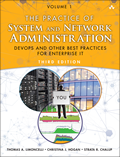
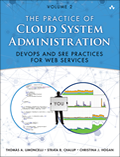
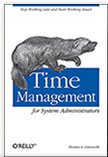
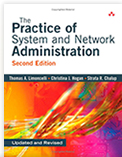
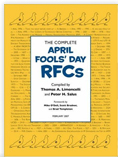
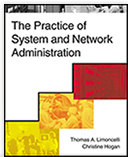

Firstly, fantastic article. I am doing a similar tactic to get application-owners to migrate use of TLS certificates signed with SHA-1 to certificates signed with SHA256. We learned (through trial-and-error) almost exactly what you describe above. Thank you for this article.
In your parenthetical comment that referenced the "Frozen" DVD being broken, I think you have a typo or word-choice-error in the first sentence.
>